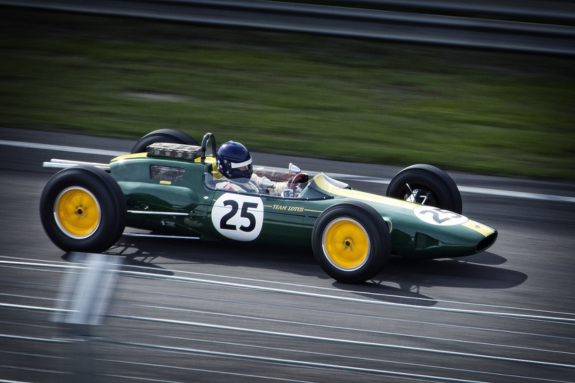Last Updated on September 23, 2023 by Pittalks
When it comes to the world of car racing, nothing spells sophistication and unparalleled technology quite like Formula One (F1). These high-speed machines are a marvel of modern engineering, and their under-the-hood workings often leave fans and enthusiasts intrigued. One question that often arises in the world of F1 is: Are F1 Cars Manual or Automatic?
Following a thorough analysis of various articles and research materials on the topic, we will be answering this question in depth. This comprehensive guide will take you through the transmission systems in F1 cars, their evolution, and their impact on the sport.

What Kind of Transmission Does an F1 Car Have?
Modern-day F1 vehicles are equipped with highly sophisticated sequential semi-automatic gearboxes. In simple terms, the gearbox in an F1 car is not fully automatic, but it’s not manual either. Instead, it’s a fine blend of both, designed to provide superior speed and efficiency on the racetrack.
In contrast to conventional vehicles that use either manual or automatic transmissions, F1 cars utilize a semi-automatic transmission where gear changes are facilitated by the use of paddle shifters located behind the steering wheel. This configuration is a departure from the traditional three-pedal setup (accelerator, brake, and clutch) found in most road-going vehicles.
How Do F1 Cars Shift Then?
The process of shifting gears in F1 cars is facilitated by the use of paddle shifters. Unlike manual vehicles where the driver has to engage the clutch to switch gears, in an F1 car, all it takes is a flick of a paddle.
The driver uses two paddles located behind the steering wheel to shift up or down. The right paddle is typically used for upshifting (moving to a higher gear), while the left paddle is used for downshifting (moving to a lower gear). This setup allows the driver to keep their hands on the steering wheel at all times, enabling quicker reactions and better control of the vehicle.
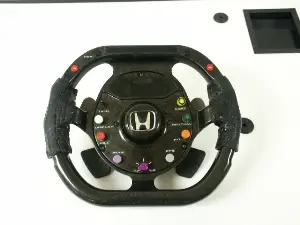
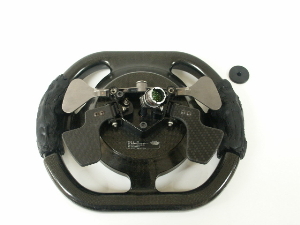
What’s A Semi-Automatic Gearbox?
A semi-automatic gearbox, also known as a sequential manual gearbox, is a type of transmission that combines aspects of both manual and automatic transmissions. Unlike a manual gearbox, where the driver has to manually select every gear change, in a semi-automatic gearbox, the system controls the selection and engagement of gears.
However, unlike a fully automatic gearbox that independently decides when to change gears, a semi-automatic gearbox requires the driver to initiate the gear change. This is typically done using paddle shifters or buttons on the steering wheel, giving the driver control over when to shift gears while eliminating the need for a clutch pedal.
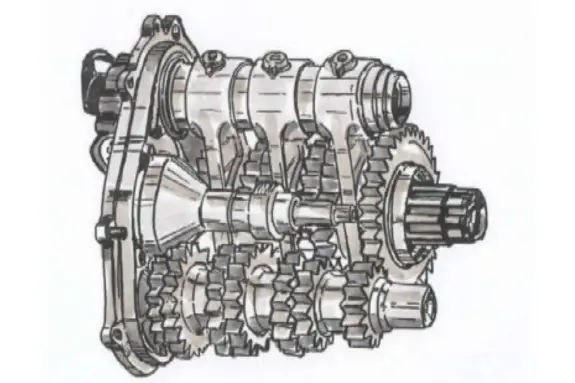

Pros and Cons of Semi-Automatic Gearboxes
Pros
- Faster Gear Changes: One of the significant advantages of a semi-automatic gearbox is the speed of gear changes. With the help of computer-controlled mechanisms, gear changes can be executed significantly faster than a human could manually, leading to improved performance on the race track.
- Improved Efficiency: By eliminating the need for the driver to operate a clutch pedal and manually select gears, semi-automatic gearboxes allow for more efficient driving. This is especially beneficial in a racing scenario, where every fraction of a second matters.
- Increased Control: With the need for a traditional clutch pedal removed, drivers can keep both hands on the steering wheel at all times, improving vehicle control.
Cons
- Complexity: Semi-automatic gearboxes are more complex than their manual counterparts. This increased complexity can lead to higher costs for repairs and maintenance.
- Less Driver Engagement: While semi-automatic gearboxes do offer some level of driver control, they still can’t match the engagement and control offered by a fully manual gearbox. Some drivers, particularly those who enjoy the tactile feel of shifting gears manually, might find semi-automatic gearboxes less satisfying to use.
Read next: What is DRS in F1?

What is Manual Mode?
Despite the semi-automatic nature of their transmissions, F1 cars do have a ‘manual mode’. This mode is typically used during the start of the race or when leaving the pit lane. In this scenario, the driver manually operates the clutch using a lever mounted on the back of the steering wheel to engage the first gear from a stationary position.
Is This The Same As Paddle Shifters?
While both systems allow the driver to manually control gear changes, they are not the same. The use of paddle shifters allows the driver to shift gears without the need for a clutch pedal, while manual mode involves the use of a clutch lever for the initial gear engagement from a standstill.
When Do F1 Cars Use Manual Mode?
F1 cars use manual mode primarily during the start of the race or when exiting the pit lane. In these instances, the driver manually controls the clutch to engage the first gear. However, once the car is moving, the semi-automatic gearbox takes over, and gear changes are made using the paddle shifters.
Related article: Are F1 Cars AWD?
Are All F1 Transmissions The Same?
While all F1 cars use semi-automatic gearboxes, not all F1 transmissions are the same. The design, materials used, and specific characteristics of the gearbox can vary between different teams and manufacturers, contributing to the unique performance characteristics of each car.

What Other Kind of Transmissions Are There?
Besides the semi-automatic transmission used in F1, there are several other types of transmissions used in different vehicles. These include:
- Manual Transmission: Also known as a stick-shift, manual transmissions require the driver to manually change gears using a gear stick and clutch pedal.
- Automatic Transmission: In an automatic transmission, the vehicle decides when to change gears based on factors like speed and engine load, without any input from the driver.
- Continuously Variable Transmission (CVT): A CVT doesn’t have fixed gear ratios. Instead, it constantly varies the gear ratio to provide the most efficient power delivery.
Here’s a table detailing the differences between an automatic transmission, a manual transmission, and our relevance here – the semi-automatic (sequential) transmission:
| Feature | Automatic Transmission | Manual Transmission | Semi-Automatic Transmission |
|---|---|---|---|
| Shifting Mechanism | Electronically controlled | Driver-operated | Electronically controlled |
| Gear Changes | Seamless, no interruption | Requires clutch, pause | Rapid, no interruption |
| Shift Speed | Consistent, optimized | Variable, driver-dependent | Extremely fast |
| Driver Involvement | Minimal | High, more control | Moderate |
| Response Time | Quick and predictable | Variable, driver-dependent | Rapid and predictable |
| Acceleration | Smooth and efficient | Affected by driver skill | Quick and efficient |
| Deceleration | Smooth and controlled | Affected by driver skill | Controlled and efficient |
| Cornering | Stable during shifts | Requires driver attention | Stable and efficient |
| Consistency | High consistency | Depends on driver skill | High consistency |
| Efficiency | High fuel efficiency | Depends on driver skill | High fuel efficiency |
| Weight | Heavier due to complexity | Lighter | Moderately lightweight |
| Maintenance | Complex and costly | Simple and cost-effective | Moderate complexity |
| Adaptability | Limited flexibility | Manual control required | Adjustable parameters |
| Launch Control | Effective | Manual skill required | Effective |
| F1 Racing Impact | Less favored due to weight | Historical significance | Widely used and evolved |
| Technological Evolution | Limited advancements | No longer used in F1 | Continuously developed |
Are There Restrictions On Transmission Types?
Yes, Formula One regulations specify that all cars must use a semi-automatic sequential gearbox with a certain number of forward and reverse gears. This ensures that all teams compete on a level playing field and that no team gains an unfair advantage through the use of a different type of transmission.
Keep reading: How Much Horsepower Does an F1 Car Have?
FAQs and Related Questions
When Did F1 Cars Switch To A Semi-Automatic Transmission?
The use of semi-automatic transmissions in F1 cars began in 1989. Ferrari was the first team to introduce this technology, and it became standard across all teams by 1996.
What’s The Difference Between Automatic and Semi-automatic Transmissions?
The main difference between automatic and semi-automatic transmissions lies in the level of driver involvement. In a fully automatic transmission, the vehicle decides when to change gears without any input from the driver. In contrast, a semi-automatic transmission requires the driver to initiate gear changes, usually through the use of paddle shifters.
Conclusion
In conclusion, while F1 cars do not use a traditional manual transmission, they do incorporate elements of both manual and automatic transmissions in their semi-automatic sequential gearboxes. This technology offers the perfect blend of driver engagement and automated efficiency, making it the ideal choice for the high-speed, high-stakes world of Formula One racing.
By understanding the intricacies of F1 transmissions, we can appreciate the incredible engineering that goes into these high-performance machines and the skill required from the drivers who control them. As technology continues to evolve, we can look forward to even more impressive developments in this exciting sport.
-
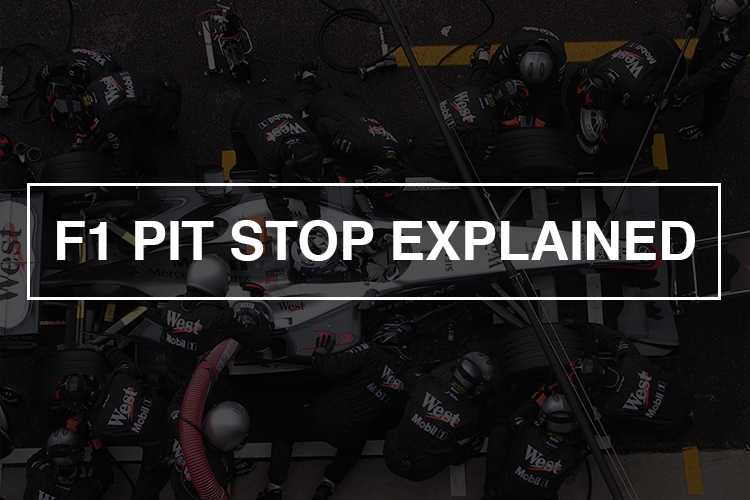
F1 pit stops 101 | All rules simply explained
Did you know that the average F1 pit stop takes just under three seconds?
In that time, 4 tires are changed, and any necessary adjustments are made. In a sport where fractions of a second can make….Read more
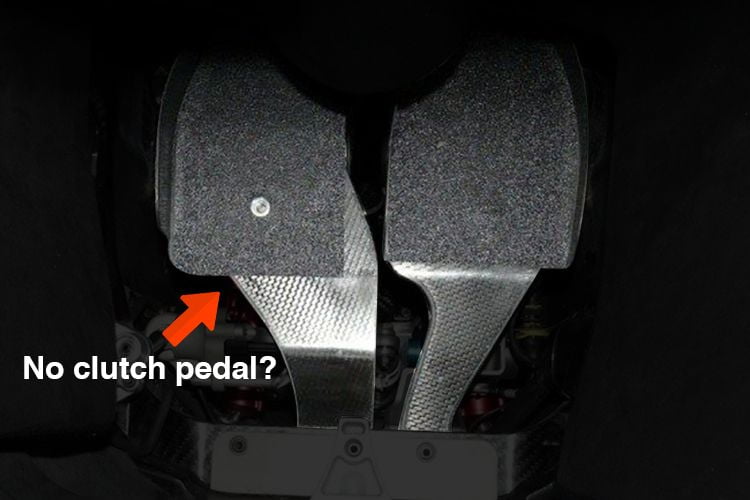
Why don’t F1 cars have clutch pedal? But they do have a clutch!
Since its invention in the early 19th century, the clutch has been a key component of all motor vehicles. But do race cars like those in Formula One (F1) still need them?
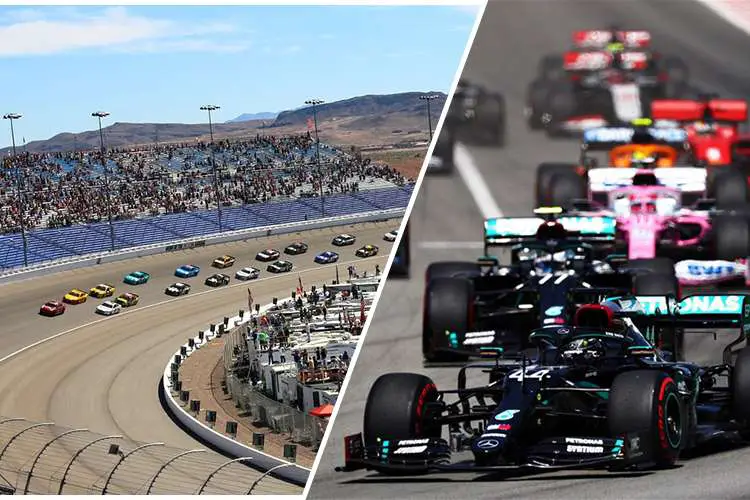
NASCAR vs. F1: The Ultimate Showdown
Did you know that the first NASCAR race was held in 1949, while the first Formula One (F1) race wasn’t until 1950?
Nowadays, F1 races are typically watched by fans all over…

